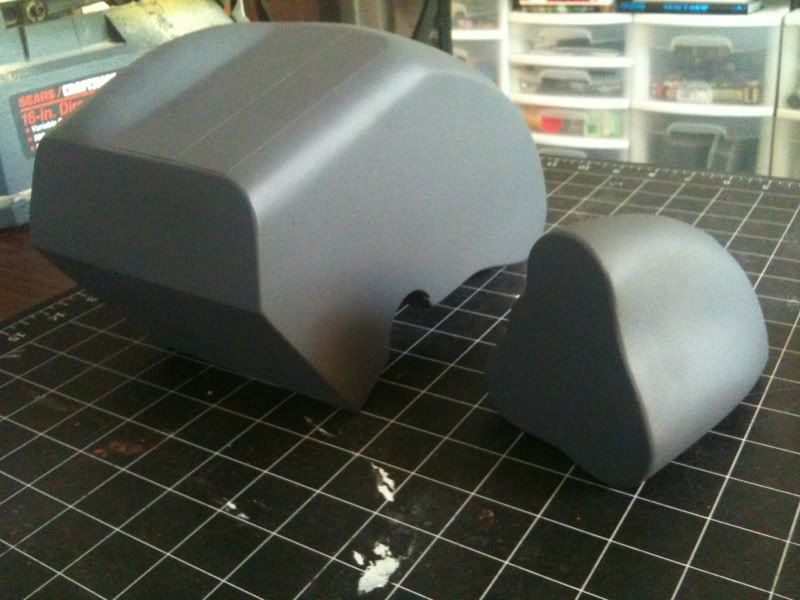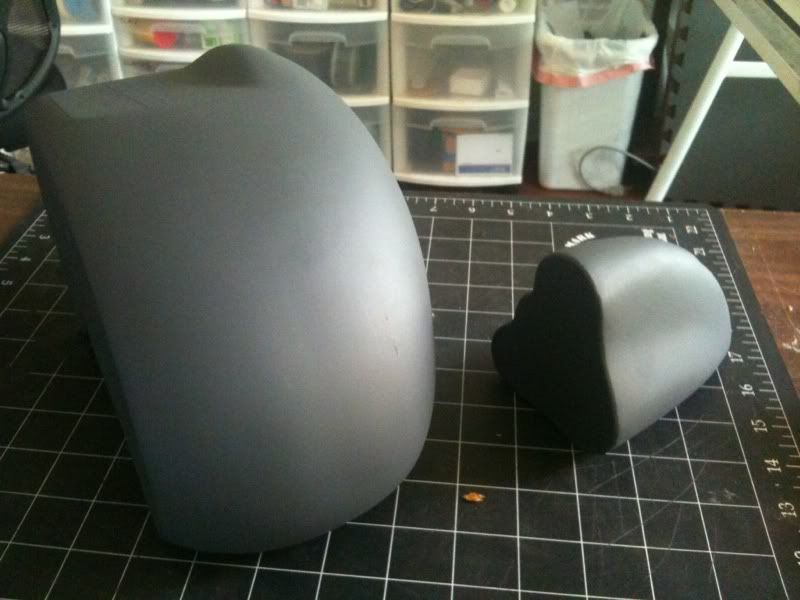I hate blowing a bunch silicone on a mold that will only be used to make one intermediate part but I need to make less delicate resin versions of a couple parts.
The parts in question-



The hole on the smaller piece has been filled in since this photo was taken.
I was thinking about making 2 part plaster molds of each. I can split the smaller part vertically without any undercuts and the larger part should be able to split either horizontal or vertically without undercuts.
Can I take those plaster molds, clear coat the insides, shoot a little release spray and rotocast some smooth-on 65D inside and get a decent resin part that I can carve and sand my final detailing into without using silicone?
A slightly imperfect parting seem is not to big a deal.
Nick
The parts in question-



The hole on the smaller piece has been filled in since this photo was taken.
I was thinking about making 2 part plaster molds of each. I can split the smaller part vertically without any undercuts and the larger part should be able to split either horizontal or vertically without undercuts.
Can I take those plaster molds, clear coat the insides, shoot a little release spray and rotocast some smooth-on 65D inside and get a decent resin part that I can carve and sand my final detailing into without using silicone?
A slightly imperfect parting seem is not to big a deal.
Nick
